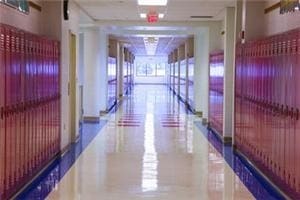Schools are among the many places where occupancy sensors cut down on the energy costs of a commercial lighting system.
In Lawrence Township, N.J., the public schools have spent nearly $100,000 to outfit eight buildings with the sensors. They have been implemented within cafeterias, gymnasiums, and hallways to aid in reducing the buildings' energy costs. Off peak traffic times such as passing periods or class times, constant lighting is unnecessary and wasteful. If P.E. class is outside for the day, there is no need for a fully-lit gym.
Applying motion sensor switches is also advantageous in schools after-hours. Lights are left on in a building until the custodial staff cleans an area. Occupancy sensors would allow those staff members to have light while they work, and turn off the lights in other parts of the school. Given that schools are sizeable buildings, leaving the lights on for most of the building while cleaning a single room is gratuitous.
The Department of the Interior states that occupancy sensors reduce energy usage by 40 percent in small work rooms, 50 percent in restrooms and 25 percent in hallways. At those rates, their use within Lawrence Township public schools promises a good return on their investment.





